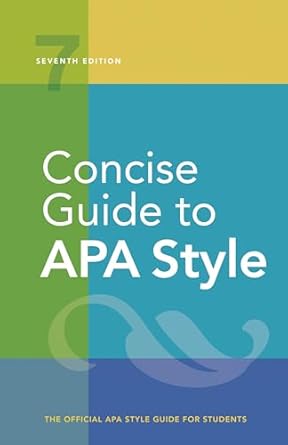[toc]
mastering quotations accuracy academic integrity
Concise Guide to APA Style: 7th Edition (OFFICIAL)
Page 223 Review
Understanding the Nuances of Quotations in Academic Writing
Quoting material effectively is a cornerstone of academic writing, ensuring accuracy and proper attribution.
However, the art of quotation involves more than just copying text verbatim.
It requires a nuanced understanding of when and how to make necessary alterations while preserving the original author’s intent.
This analysis delves into key principles outlined in the provided text, focusing on permissible changes and those that demand explicit explanation.
Minor Adjustments for Clarity and Syntax
The text highlights several minor adjustments that can be made to quotations without compromising their integrity.
These include modifications to punctuation and quotation mark styles:
“Some punctuation marks at the end of a quotation may be changed to fit the syntax of the sentence in which the quotation appears, as long as meaning is not changed (e.g., it might alter meaning to change a period to a question mark, depending on how the sentence is written).”
This allowance ensures that quotations seamlessly integrate into the surrounding text.
For example, a period at the end of a quoted phrase might be changed to a comma if the quotation continues as part of a larger sentence.
Furthermore, the text permits the interchange of single and double quotation marks:
“Single quotation marks may be changed to double quotation marks and vice versa.”
This flexibility allows writers to adhere to specific style guide requirements or maintain consistency within their document.
Finally, the omission of footnote or endnote callouts is also deemed acceptable:
“Footnote or endnote number callouts can be omitted (see also Section 8.32).”
This is particularly useful when the source is already clearly identified within the context of the writing.
Changes Requiring Explicit Explanation
The text emphasizes that any alterations beyond these minor adjustments necessitate explicit explanation.
This principle underscores the importance of transparency and academic honesty.
“Any other changes (e.g., italicizing words for emphasis or omitting words; see Section 8.31) must be explicitly indicated.”
One common type of change that requires explanation is the omission of material.
The text mandates the use of ellipses to signal such omissions:
“Use an ellipsis to indicate that you have omitted words within a quotation (e.g., to shorten a sentence or tie two sentences together).
Either type three periods with spaces around each (…) or use the ellipsis character created by your word-processing program when you type three periods in a row ( … ), with a space before and after.”
Ellipses provide a clear visual cue to the reader that the quotation is not a complete representation of the original source.
The text specifically cautions against using ellipses at the beginning or end of a quotation, implying that the context preceding or following the quoted material might be crucial for accurate interpretation.
Omitting words without ellipsis is unethical and considered academic dishonesty.
Example of Changes with Explanation
The text provides an illustrative example of changes made to a direct quotation, highlighting the use of brackets and “sic” to indicate alterations:
“De Backer and Fisher (2012) noted that “those [adults] who read gossip magazines, watch gossip-related television shows, or read gossip articles from internet sites . . . may feel guilty about wasting their time on a leisure pursuit” (p. 421).
They emphasized that “it is important to remember that gossip helped our ancestors survive [emphasis added], and thus by accessing gossip, one is faced with an opportunity to vicariously learn solution [sic] to adaptive problems” (De Backer & Fisher, 2012, p. 421).”
In this example, brackets are used to clarify the original text for the reader.
The inclusion of ‘[adults]’ clarifies who ‘those’ refers to.
Furthermore, the use of ‘[emphasis added]’ indicates that the emphasis was not present in the original text but was added by the author of the current work.
Similarly, ‘[sic]’ indicates that an error or unusual phrasing in the original source is being reproduced verbatim, signaling that the author is aware of the issue but is quoting it accurately.
Best Practices for Accurate Quotation
Based on the principles outlined in the text, effective quotation requires a keen attention to detail and a commitment to representing the original source accurately.
While minor adjustments for syntax and style are permissible, any substantial alterations must be clearly indicated to the reader.
The use of ellipses, brackets, and ‘[sic]’ provides transparency and ensures that the original author’s intent is not misrepresented.
By adhering to these guidelines, writers can maintain academic integrity and build credibility in their work.
In conclusion, mastering the art of quotation is vital for effective academic writing.
By understanding the nuances of permissible changes and the importance of explicit explanation, writers can seamlessly integrate source material into their arguments while upholding the highest standards of accuracy and integrity.
This careful approach ensures that quotations serve as powerful tools for supporting claims and enriching scholarly discourse.
Buy full ebook for only $18: https://www.lulu.com/shop/american-psychological-association/concise-guide-to-apa-style-7th-edition-official/ebook/product-rmzpq54.html?page=1&pageSize=4
Mastering Quotations Accuracy Academic Integrity
Read more: Crafting a Perfect Title Page: Key Elements & Formatting


Leave a Reply